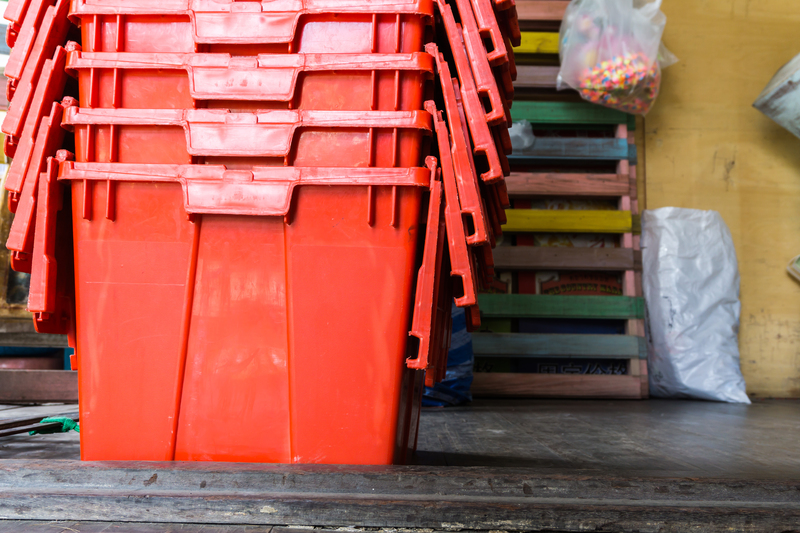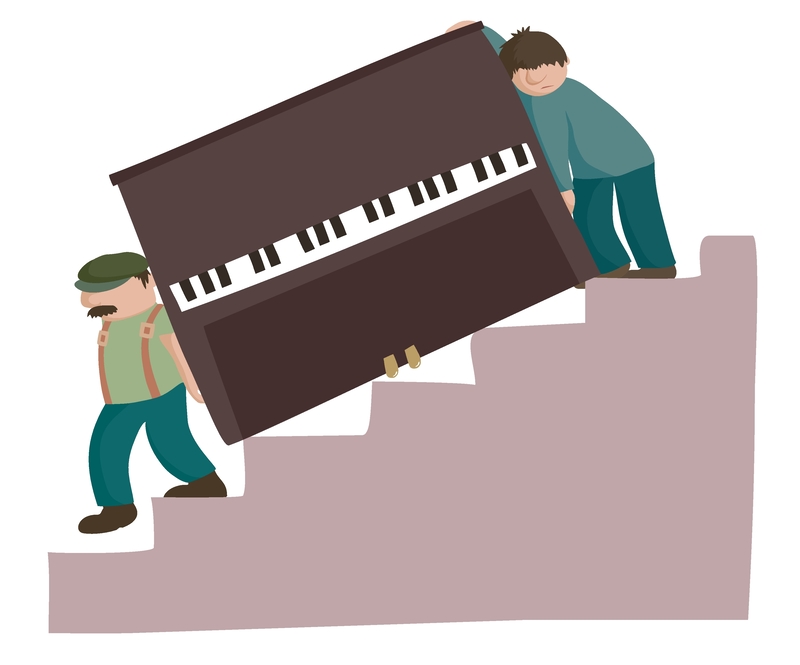Expert Advice on Packing Properly for a Stress-Free Move
Moving to a new home can be both exciting and overwhelming. With strategic planning, smart packing, and a few insider tips from professional movers, you can ensure your relocation is smooth and hassle-free. In this comprehensive guide, we'll share expert advice on packing properly to guarantee a stress-free move. Whether you're relocating across town or embarking on a long-distance journey, these actionable steps will keep you organized and at ease from start to finish.
The Importance of Proper Packing for a Smooth Move
Efficient packing is the cornerstone of a successful move. Properly packed boxes protect your belongings, make unpacking easier, and help the moving process proceed swiftly. Poor packing can lead to damaged items, wasted time, and increased stress on moving day. By understanding the essentials of packing and incorporating expert recommendations, you can safeguard your possessions and streamline the entire moving process.

Step-by-Step Guide to Packing for a Stress-Free Move
1. Begin with a Moving Plan
- Create a timeline: Start planning at least a month before your move. Assign dates for each packing phase.
- Make a checklist: List everything you'll need to do, from sorting items to finalizing moving supplies.
- Book professionals in advance: If hiring movers, secure their services early to avoid last-minute stress.
2. Declutter Before You Pack
One of the simplest ways to minimize moving stress is to declutter. Sorting your belongings allows for a lighter, more manageable move. Here's how:
- Sort every room: Go through each area and put items into keep, donate, sell, and discard piles.
- Host a garage sale: Sell unwanted items or donate to charity for a fresh start in your new home.
- Dispose of hazardous items: Safely discard items like paint, chemicals, and batteries according to local regulations.
3. Gather Quality Packing Supplies
Invest in sturdy, high-quality packing materials to keep your belongings safe. Here's what every move requires:
- Sturdy boxes in various sizes for different items.
- Packing tape for securely sealing boxes.
- Bubble wrap and packing paper to cushion fragile goods.
- Furniture blankets or moving pads to prevent scratches and dings.
- Markers and labels for identifying box contents and destination rooms.
- Plastic bins for valuables or items that need extra protection from moisture.
Pro tip: Don't overfill boxes, as this makes them difficult to carry and increases the risk of breakage.
4. Use a Systematic Approach to Packing Your Home
Packing properly is all about order and logic. Here's the recommended method:
- Pack non-essentials first: Begin with items you won't need for a while, like seasonal decor and out-of-season clothes.
- Leave daily necessities until last: Essentials like toiletries, clothing, and kitchenware should be packed last.
- Designate a "Moving Essentials" box: Pack chargers, basic tools, important documents, and any items you'll need immediately upon arrival.
- Room-by-room packing: Label boxes with both the room name and a summary of contents for easier unpacking.
5. Protect Fragile and Valuable Items
Damage to breakables can be avoided with the right packing techniques:
- Wrap individually: Each glass, plate, or framed item should be wrapped in bubble wrap or packing paper. Fill empty spaces with crumpled paper for added cushioning.
- Pack vertically: Plates and glassware are less likely to break when stored upright in boxes.
- Use specialty boxes: For TVs, artwork, and mirrors, use boxes designed for delicate items.
- Label as "Fragile": Clearly mark all sides of boxes with dolls or glassware to alert movers.
Expert tip: Take photos of valuables before packing for insurance purposes.
6. Packing Heavy and Bulky Items
Packing bulky furniture or heavy appliances requires additional care:
- Disassemble when possible: Take apart beds, tables, and shelving units. Keep hardware in labeled, sealed bags attached to the furniture.
- Cover furniture: Use moving blankets or shrink wrap to protect from scratches and dirt.
- Use dollies and sliders: These tools make transporting large items safer and quicker.
- Secure appliance cords: Tape cords to appliances to prevent tripping or tangling.
7. Master the Art of Efficient Packing
- Box weight distribution: Place heavier items at the bottom and lighter ones on top.
- Fill every gap: Prevent shifting by using clothing, towels, or packing peanuts to fill empty spaces.
- Double-box delicate electronics: If you don't have original packaging, use two boxes with extra padding in between.
- Keep similar items together: Group books, linens, and kitchenware for easier organization.
Expert Moving and Packing Tips for a Stress-Free Move
Start Early and Pace Yourself
Procrastination is the enemy of a calm move. Start packing weeks ahead and work in daily increments. This helps you avoid rushed, careless packing that can lead to mistakes and breakage.
Label Everything Clearly and Consistently
Effective labeling is a major stress-reliever:
- Color-code or number boxes by room for quick identification.
- List box contents on the side for easy reference while unpacking.
- Mark key boxes as "Open First" so you know what to unpack first in your new home.
Understand What Not to Pack (and Why)
Some items shouldn't go in the moving truck. Professional movers recommend you personally transport:
- Important documents: Passports, medical files, birth certificates, and financial records.
- Valuables: Jewelry, heirlooms, and personal electronics.
- Essentials: Medications, critical toiletries, keys, and chargers.
- Hazardous materials: Paint, propane, firearms, and chemicals should be disposed of or transported with caution.
Tips for Packing with Kids and Pets
- Create a safe zone: Set aside a room for kids and pets to relax during moving day, away from packed boxes and heavy traffic.
- Prepare entertainment and snacks: Keep favorite toys, books, or treats within reach to reduce stress for everyone.
- Gradually introduce changes: Start with minor packing and talk about the move regularly to help children adjust.
Packing Properly for Different Types of Moves
Local Moves
With moves within the same city or region, you may have more flexibility. Consider using clear bins for items you'll need immediately and make several small trips for essentials.
Long-Distance and International Moves
- Follow strict labeling and inventory practices for customs requirements.
- Pack lightly: High transportation costs make it worth taking only what you truly need.
- Understand restricted items: Laws vary by country regarding what can be shipped.
Moving in Bad Weather
- Wrap items in plastic or waterproof coverings to protect against rain or snow.
- Wear non-slip shoes and clear walkways to prevent accidents.
- Allow for extra time so you can load and unload safely.
Unpacking Strategically After the Move
- Begin with essentials: Set up beds, kitchen basics, and toiletries first.
- Work room by room: Start with key living areas, gradually organizing as you go.
- Recycle packing materials: Donate, recycle, or reuse boxes and packing supplies.
- Unpack with purpose: Take the time to organize, clean surfaces, and make your new space feel like home.
More Expert Tips for a Stress-Free Moving Process
- Hire reputable moving companies: Check reviews, ask for references, and confirm licensing and insurance.
- Take care of utilities and address changes early: Set up or transfer services before moving day.
- Stay hydrated and take breaks: Don't rush or overexert yourself, especially if moving heavy boxes.
- Prepare an Overnight Bag: Pack a bag with pajamas, toiletries, and other comforts for the first night.
- Celebrate milestones: Each completed phase is a step closer to a seamless move.

Common Packing Mistakes to Avoid for a Peaceful Move
- Leaving packing to the last minute: This leads to chaos and poor protection of your belongings.
- Using damaged or thin boxes: Always use sturdy boxes to prevent collapsed loads.
- Overloading boxes: Keep each box at a manageable weight - no more than 50 pounds is a good guideline.
- Forgetting to label boxes: Unlabeled boxes make unpacking a nightmare.
- Ignoring insurance or valuation coverage: Consider extra coverage for valuable or delicate items.
Conclusion: Move with Confidence by Packing Right
Packing for a move doesn't have to be an overwhelming experience. With this expert advice on moving and packing, you have the tools and strategies needed for a smooth, stress-free move. Preparation, organization, and attention to detail are your best allies. Start early, pack smart, and enjoy the excitement of starting fresh in your new space. Remember, proper packing is the foundation of a trouble-free relocation!
If you're seeking more personalized help, consider reaching out to professional movers for custom packing solutions and hands-on assistance. Wishing you a seamless and happy moving experience!



